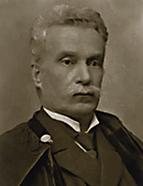

In 1883, he claimed to be a pioneer in the publication of essays on various Portuguese art industries, as seen in the 1883 catalogue for the Exposição distrital de Aveiro em 1882. Relíquias da arte nacional [Aveiro district exhibition in 1882. Relics of national art], he created studies on ceramics (1883-84), goldsmithing and jewellery (1881 to 1884), panos de rás — the textile paintings (or tapestries) that originated in the city of Arras — (1900), and metals (1901). It is in the "popular soul" and "spontaneous inspiration" of the cottage industries — which he believes only require careful education — that the historian hopes to recover the homeland's traditions, traditions that are attested by a chronological continuity that spans from prehistory to the ornaments of cottage industries. These traditions, which are suitable for all types of buildings — whether noble, bourgeois, or rustic — exist in potential within the natural proclivity of working-class people. They are to be recreated in Vasconcelos' ultimate objective: a style that is pure and distinctly national in its expression. It is not a return to the past, but a return to the genuine sources of national inspiration.
This is how the historian engages in a controversy regarding an alleged national style represented in the monuments of the 16th century, the manueline , criticising its creators for focusing solely on ornamentation rather than the "static conditions of architecture" (the constructive elements); for failing to visit other monuments, both Portuguese and Spanish; and for neglecting the broader history of the arts and crafts in the Iberian Peninsula. This is also how he sets out to demystify another controversy, the question of the painter Grão-Vasco, to claim, through historical sources, the presence of eclecticism in the paintings of this School where the unification of principles was said to be rooted (that is, an absolutely original trait); to claim that notable painters travelled and moved from one place to another, sometimes collaborating in the ornamentation of the same temple. "Instead of a mythical Grão-Vasco, we have a dozen individualities worthy of study and our recognition" (A pintura portuguesa nos séculos XV e XVI (Segundo ensaio). Grão-Vasco [Portuguese painting in the 15th and 16th centuries (Second essay). Grão-Vasco, 1890, p. 1879]; to claim that a single school (Viseu) cannot summarise the glory of Portuguese painting.
This work is financed by national funds through FCT - Foundation for Science and Technology, I.P, in the scope of the projects UIDB/04311/2020 and UIDP/04311/2020.
